What to Expect When Travelling to Tibet
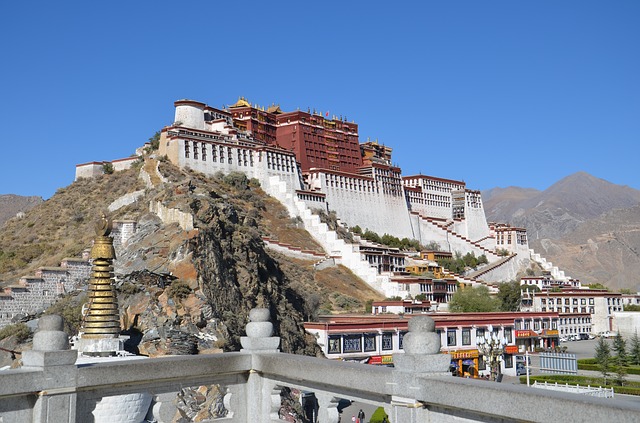
Travelling to Tibet is different. Even the most confident solo traveller will have to accept that independent travel here is not possible. The Chinese Government—which rules Tibet—puts restrictions on where tourists can travel, and how they can do it. But as a long-time independent traveller (oftentimes solo), I must admit it was nice to forget all aspects of planning on my recent ten day tour of Tibet. It allowed me to sit back and enjoy the experience, rather than be preoccupied with how to get around, or where to stay and eat.
I didn’t really know what to expect before travelling to Tibet, so I wanted to share some of my experiences to help other women thinking of visiting this region. There are two main types of trips to Tibet: sightseeing tours and trekking tours. I did a sightseeing tour that flew from Kathmandu to Lhasa, went overland west of Lhasa, and returned to Lhasa for the return flight to Kathmandu.
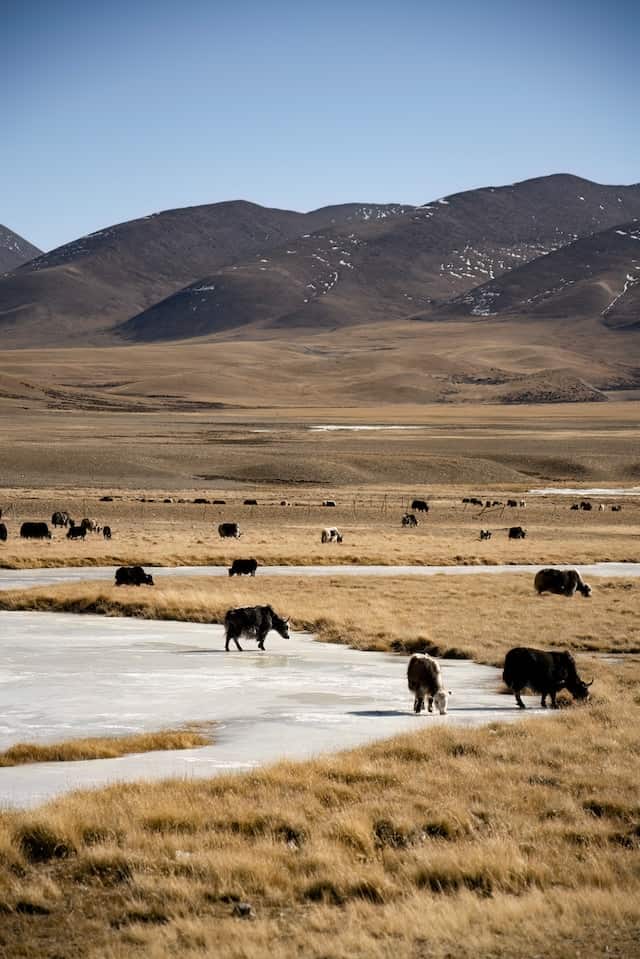
What to Expect When Travelling to Tibet: You don’t need to pack like a backpacker
I usually travel with a rather over-stuffed backpack, and have to haul it on and off buses and trains. Not so in Tibet, as you travel with a driver at all times. While drivers are not porters, it does mean that you don’t have to do most of the hard work yourself. I found a small wheeled suitcase to be ideal for travelling in Tibet, and I didn’t have to worry too much about how heavy it was.
Be prepared for the altitude
Most itineraries have built-in acclimatisation days in Lhasa. The city is very high, at 3656 metres (11,995 feet), and much of the rest of Tibet is even higher. It’s common to experience headaches, nausea and/or shortness of breath when you first fly into Lhasa. We arrived into Lhasa late in the afternoon and were advised not to walk too far that first day.
On our first full day in the city, we were only taken on sightseeing activities that didn’t require walking too much. By days two and three in Lhasa, we were all able to walk much further, pretty comfortably.
I was very fortunate not to experience any altitude-related problems at all in Lhasa. In fact, only one of the other three women accompanying me had a headache. As we ascended higher and the air got thinner, it did become more difficult to breathe, especially when walking. This was most noticeable at Everest Base Camp (above 5000 metres) and at night, when erratic breathing made it a bit difficult to fall asleep.
However, the altitude wasn’t a significant problem for me or any of my companions. We were advised to drink a lot of water, avoid alcohol (although Lhasa Beer is so light it’s practically water, right?) and not exert ourselves.
You can take a drug called Diamox to accelerate your body’s adaptation to the high altitude, but this probably won’t be necessary. I carried some packets with me, but didn’t use any.
You will visit SO many monasteries!
The number one sightseeing activity in Tibet is visiting monasteries. And then some more monasteries. It’s a good thing they were all so varied and so beautiful. Our guide did a good job of explaining Tibetan Buddhism to us, and although I already had a basic understanding from my travels in Nepal and Ladakh, I definitely learned more in Tibet.
In Lhasa you will visit the old university monasteries of Sera and Drepung, where you can watch the young monks debating Buddhist philosophy. In Gyantse you will visit the incredible Kumbum, a wedding-cake shaped stupa. In Sakya, well off the beaten path, you will visit a massive monastery that houses over 80,000 Buddhist philosophical scrolls in its library. Each monastery is different, both inside and outside, and is a delight to visit.
You’ll feel like you’re entering another world, as you step into the dark spaces with colourful statues, engulfed in clouds of incense smoke and the smell of butter lamps.
You won’t tire of Everest views
Everest views from a 5000 metre mountain pass. Everest from the window of my lodge. Everest at sunset. Everest at sunrise. Everest from the car. There will be many, many opportunities to appreciate the different angles of Everest, so enjoy them all. (And although it pains me to admit this, being the Nepalophile that I am the views of Everest are actually better from Tibet than from Nepal!)
Prepare to get cold at Everest Base Camp
But… as beautiful as Everest is, you will have to get cold to appreciate it. Even though the weather in Tibet is generally very clear and sunny, this is a high altitude desert. The frigid winds whip up in the afternoon, making the temperatures sub-zero.
Fortunately, the lodge near Everest Base Camp had electric blankets on the beds, keeping us warm at night, because the night-time temperatures were also freezing.
What to Expect When Travelling to Tibet.
You’ll spend a lot of time in the car
Although most tours spend several days in Lhasa at the beginning, once you leave the city, you’ll be spending a lot of time in the car. I actually didn’t mind this at all, because the scenery was so beautiful and there was always something interesting to look at.
Stops were frequent—to look at the views, take pictures, stop for drinks and snacks, or to go to the toilet (side note: Chinese toilets are so horrendous that you’ll be pleased with an open-air spot behind a bush! Take tissues.)
Expect a lot of police checkpoints
A reality of travelling in Tibet is close monitoring of your movements. This means frequent checkpoints along the highways. Keep your passport (and your group visa, if you’re travelling on one) to hand, as you’ll need to pass it to your guide frequently.
The roads are excellent
Perhaps this was most noticeable to me because I was coming from Nepal, but the roads in Tibet are in very good condition, and you can cover a lot of distance in a short time. Considering how much time you spend in the car on an average tour, this is a very good thing.
The food… not so much
I know this is a totally subjective thing, but I didn’t love the food in Tibet. As I live in Nepal, I get the opportunity to eat the best Tibetan dishes regularly (such as momo and thukpa). There seemed to be a lack of fresh food in Tibet, meaning that I ended up eating noodle soup at least once a day. Which was fine, but got a bit boring.
For excellent Tibetan food, I would actually recommend travelling in Nepal. I found myself searching for the Nepali food options on Tibetan menus, and fortunately there was usually something, such as dal and vegetable curry.
You’ll be free to wander on your own a bit in Lhasa
Before travelling to Tibet, I was under the impression that it was not possible to leave the guide’s side for a moment (um, apart from bedtime). However, this isn’t strictly true. While it’s not possible to travel independently in Tibet, and you can’t enter any tourist attractions (such as monasteries) alone, there will be time for independent shopping and maybe a dinner or two alone. I went on some nice strolls around the markets of Lhasa by myself, which was welcome after so much time with a group (as great as they were!)
Travelling in Tibet is really unlike travelling anywhere else. To understand this beautiful, stark and fascinating part of the world, you need to see it for yourself.
This article was originally published on November 25, 2016. I was a guest of Royal Mountain Travel on their 10 day Tibet Overland Tour with Everest Base Camp. All opinions are entirely my own, and all links are provided for informational purposes only. Photos by Pixabay and Unsplash.

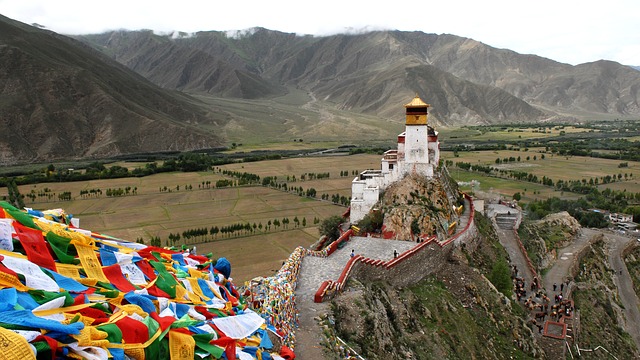
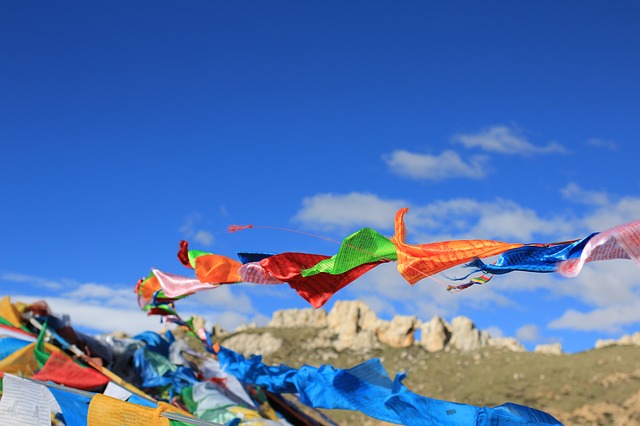
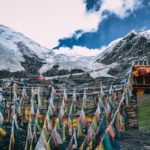
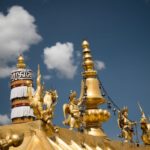






Thank you for the good info. I have a question about meditation. It seams that the trip is more touristic. Are there any opportunities to meditate in Tibet?
That’s a good question, but unfortunately I don’t know the answer. Nepal is probably a better option for meditation retreats. There are numerous options there, and no restrictions on how you can travel (unlike Tibet). Plus, lots of Tibetan Buddhist options there too.
I had looked into doing a similar trip when I lived in Nepal a decade ago, but ultimately opted not to because I wasn’t sure whether an organized tour would allow us to put our dollars into the hands of Tibetans rather than Chinese businesses. Can you speak to this? Were you able to tell where your money was going (for hotels, guide, food, etc) or have any control over this? Thank you, and I’m glad to hear you had a great trip!
Hi Britany, that’s a very good question. I went with a Nepali tour company who partner with a Tibetan company based in Lhasa. While it’s not entirely possible to know where the money goes, it seemed to me that we patronised mostly Tibetan businesses–the hotels and restaurants we visited were Tibetan-run (apart from the popular Duniya Restaurant in Lhasa, which is run by a Dutch couple! The only ‘foreigner’ run restaurant in the whole of Tibet). The tour guide and driver were Tibetan. When I had free time in Lhasa I could choose which restaurants to eat at, and while it’s impossible really to know who owned each business, I think mostly they were Tibetan run. (Plus, I don’t like Chinese food, so it was easy enough to stay away from Chinese restaurants!)
It’s certainly an ethical consideration that many travellers have, and I think careful selection of the tour company you buy a tour with would go a long way to ensuring your money is going more in the direction of where you would like it to go.